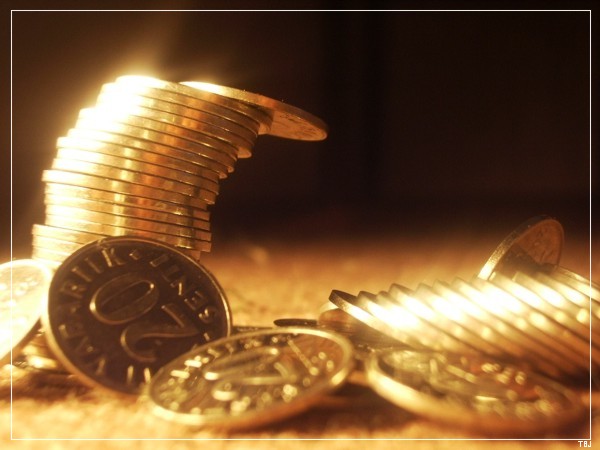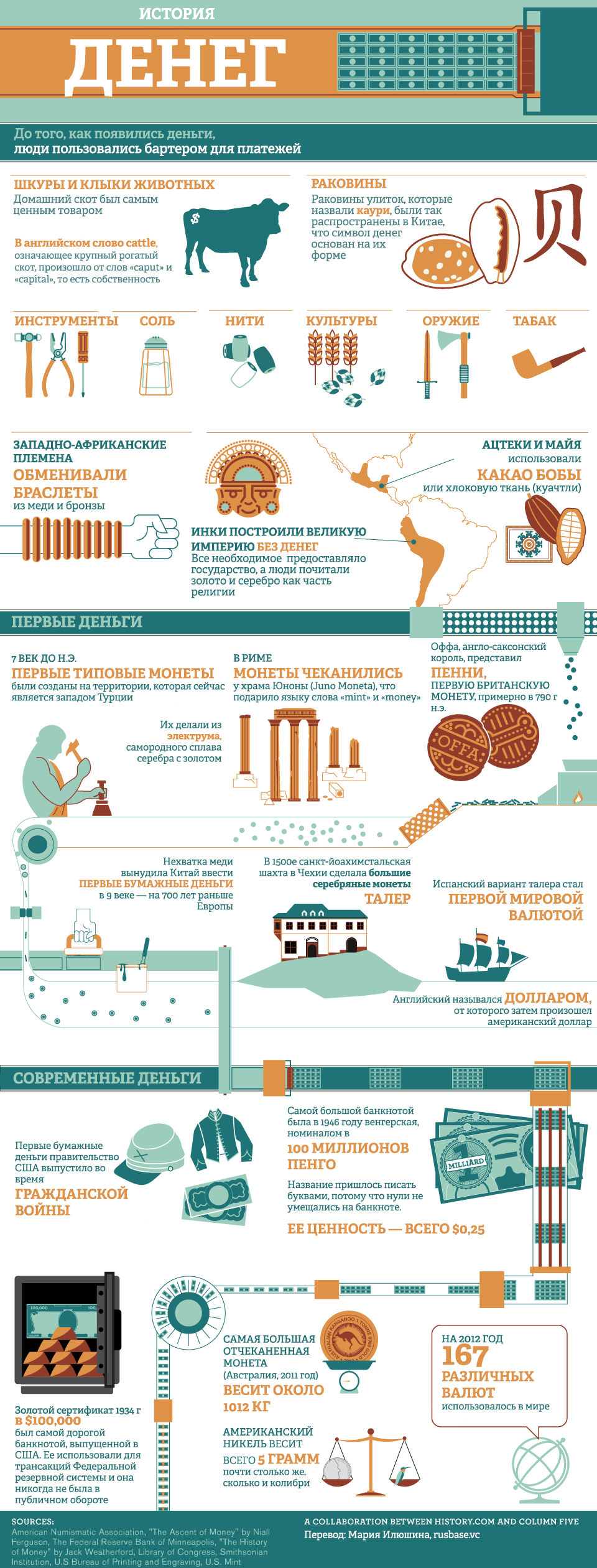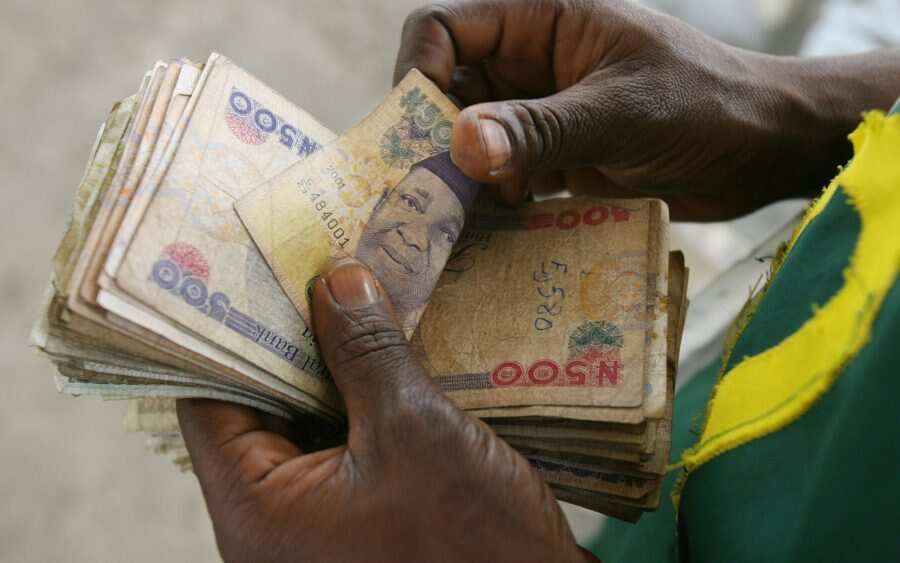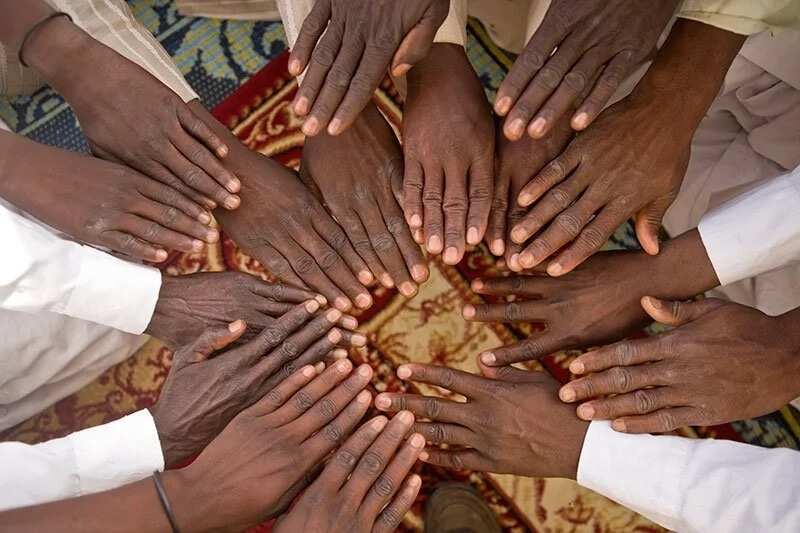evolution money что такое
The Evolution of Money
By Hans Christian Ekne on ALTCOIN MAGAZINE
From cowrie shells to cryptocurrencies — the co-evolution of money and our economy
Bitcoin will be 10 years old next week. The new digital money has experienced one of its worst bear markets to date, with a drawdown of over 80% from its all time high. Many pundits are proclaiming the death of cryptocurrencies and view them as nothing more than elaborate pyramid schemes. Are cryptocurrencies just a fad or will they have a lasting effect on our economy? If we take a step back and view monetary developments on a more coarse grained timescale, we might shed some light on this question.
Our economy and the medium of exchange we use for trade, has been co-evolving ever since humans first started trading with each other. Newer and better forms of money have been able to support a growing and increasingly complex economy. We are moving towards a more fluid system of payments — with declining friction for trade and reduced transaction costs. This article explores the history of money, the key trends in its evolution and why cryptocurrency might be the future of money.
A Short History of Money
Humans likely began to use money in what historians refer to as prehistory, i.e. in a time before we have written records, so pinpointing an exact beginning of money is difficult. In addition, money probably developed in several different places around the world as humans started transitioning from hunter and gatherer societies to an agricultural lifestyle.
Inside smaller social units there was no need for a medium of exchange because we were able to coordinate our efforts towards common goals and were not very specialized. It was only when we started to coalesce into larger social constructions that a medium of exchange really was needed to allow the economy to develop.
Commodity Money
The first type of money we started to use was probably commodity money. Commodity money is a medium of exchange that has value in and of itself, as well as its value in money. An example of this type of money was cowrie shells, which were used in China, India and Africa. It is also assumed that metals such as gold and silver were used as commodity money because in addition to being valuable as jewelry, the material is scarce, divisible, portable and durable. Key characteristics of a good form of money.
The move from a barter economy to using commodity money was one of our greatest economic inventions. Before we had money, trade was typically bilateral, and we exchanged one type of goods or service for another. But as the economy grew this became difficult, because the information processing needed for efficient trading exploded. With only 10 different types of tradable goods you suddenly need to know the relative value of each of them to each other. Money and markets solve this problem by denominating all goods in the same base units. Without adopting money, our economy would likely be stuck in the stone age.
Coins
Coins appear to have been invented separately in India, China and areas around the Aegean Sea in the time period between 700 and 500 BCE. For instance, in 600 BC, King Alyattes of Lydia minted one of the first official currencies. These coins where crafted from electrum, a naturally occurring mixture of silver and gold, and stamped with the denomination. The electrum was scarce and durable, making it good choice of material for making coins.
The evolution from commodity money to coins made it easier and faster to conduct trade. Money no longer had to be weighed, and one could just read of the denomination and calculate the value. Also, the value of the coin is decoupled from its size and makes the process of moving money around easier. This innovation in money was instrumental in allowing the economy to grow further.
Paper Money
As was the case with commodity money and coins, paper money also developed in several places at different times. The Song Dynasty in China was one of the first to introduce this new form of payment in the 11th century. It originated from merchant deposit notes during the Tang Dynasty where merchants and traders were looking for ways to reduce the amount of copper coinage needed for larger transactions. In Europe as well, paper money developed from bills of exchange that had been used in the Middle Ages, and in 1661 the Swedish Banco (a precursor to Riksbanken) introduced the first European banknotes, replacing copper plates.
Again, paper had several benefits over coins. There was no longer a need to carry around heavy loads of coins and larger transactions became easier. Storage and transfer of wealth was also improved as the notes required less space. It is speculated that this innovation also helped the growth of the economy the Americas as it was easier to transfer money across the Atlantic Ocean.
Plastic
In 1958, BankAmericard — the first modern credit card — was introduced. It was launched in Fresno California, and eventually licensed to other banks around in the US. After several years, these lincencees where united under the Visa brand in 1976. In parallel we also saw the growth and beginning of the Master Card brand.
Money as plastic was yet again another improvement in money. Carrying around large sums of money became unnecessary and we could now conduct large and small transactions without having to worry about cash. In addition, the credit card added never before seen functionality into money. Critically, it opened the possibility of remote payments. This would have a tremendous effect on our economy, especially coupled with the advent of the internet. Many of the largest companies in the world today would likely not have been viable had it not been for plastic money.
Cryptocurrencies
Almost ten years ago, on January 3. 2009, the genesis block of the bitcoin blockchain was mined. This pivotal moment marked the beginning of not only a new type money but also an entirely new asset class. Bitcoin was able to solve the central problem of double spending, and showed how we could have digital money that really was scarce.
Fast forward to today and we have had an explosion in the amount of available cryptocurrencies. Coinmarketcap.com currently lists 2071 different cryptocurrencies. This wide landscape of money is not new, and an historical analogy to this wide variety of coins can be seen in the US in the 19th century. Before the Federal Reserve was given the sole rights to distribute currency in 1913, there were more than 5000 different types of banknotes in circulation, issued by various private banks around the country.
Economic Growth and Monetary Developments
If we view the development of money alongside total global economic growth, we see that as our economy grew, new types of money were introduced to help fuel the exponential growth.
Higher economic activity propelled the innovation of better money which again has fueled even more economic output. This type of positive feedback mechanism illustrates the importance of money in our economic infrastructure. And maybe most importantly, if we want to understand how money will further evolve we need to examine the trends that shape our current economic landscape.
Key trends that will further shape the evolution of money
To understand what types of money we will use in the coming years and why cryptocurrencies might be the answer, looking at where the economy is moving and what it will need to grow can give some clues. There are a few clear trends, such as digitalization, IoT and AI that are already strongly influencing our economy and we will need a type of money that support and fuel these trends.
Digitalization
The world is becoming increasingly digital every day, as businesses continue to improve their processes by digitizing them and consumers continue to increase their demand for digital services. This digital economy would perhaps be better served by a natively digital money. A type of money that could be easily transferred and used in the digital realm.
Natively Digital Money
For instance, if we had a money that could be integrated into our web browsers, spending money online would become even easier. Amazon has one-click shopping, but imagine if this was something that could be done across the whole net and not just inside gated sites like the Amazon marketplace?
As we digitize our business processes it might also be beneficial to have a type of money that could be programmed. For example, we could program money such that it would only be sent to a given set of participants if a specific set of criteria was met. Cryptocurrencies with smart contract functionality could be used for this. A purely digital incentive structure could be used to create new and innovative forms of cooperation.
Internet Of Things & Smart Machines
The rapid growth of the internet of things (IoT) paired with the developments we are witnessing within artificial intelligence will likely require a new type of payment infrastructure. We will have billions of smart machines, operating autonomously, and they could be required to transact with each other. A few examples illustrate that our current infrastructure will not be the optimal solution for machine-to-machine payments.
Micropayments and beyond
Capacity and Scalability
Secondly, the capacity of our current global payment networks might not be large enough. For instance, VisaNet currently processes approximately 2000 TPS and have stated that they could do around 50.000 TPS. If billions of machines need to send transactions to each other, 50k TPS will perhaps be on the low side of what we will need.
There are several projects that aim to address the TPS of various cryptocurrencies and if they are successful this would likely have a strong impact on the adoption of cryptocurrencies.
Thirdly, the settlement process we currently use in many of our existing payment networks might not be optimal. If we wanted payment and settlement to be nearly instantaneous and work 24 hours a day, 7 days a week, then we will also likely need to move into cryptocurrencies. Current crypto solutions usually process transactions within seconds or a few hours a most. Additionally, when the transactions have been processed, they are final and cannot be undone. For some applications this might be an attractive attribute.
The Future of Money
As the history of money clearly shows, money is not static but constantly evolving into something better and more suited to our changing economic needs. Money is becoming easier to carry around and use. Transactions can be performed faster, and we are increasing the capacity of our economy, i.e. the volume of transactions it can handle. We have also integrated new functionality into our money, such as remote payments, and now recently with the advent of cryptocurrency, programmable money. These trends will likely manifest in any new money that we adopt.
Furthermore, as the current technological trends continue to unfold this is creating a demand for money with new functionality and other characteristics that our current fiat systems have yet to provide. Cryptocurrencies already have shown a lot of promise as they can further reduce the cost of transactions, increase the speed of transactions and create new functionality to money.
It can be argued that key stakeholders such as governments and central banks will never allow the growth and adoption of competing forms of money. They might claim that it will be too costly to loose control over money. Although, if the added economic benefits of adopting newer and better types of money outweigh the costs then cryptocurrencies likely will have a future alongside the existing fiat systems.
History shows the interdependence between the complexity of our economy and the capabilities of our payment system. We are still searching for the optimal solution and will probably continue to do so, but cryptocurrency seems to hold some promise to elevate our economy to the next level.
If you enjoyed this article and would like to see more content from me or would like to engage my services, feel free to connect with me on LinkedIn at https://www.linkedin.com/in/hans-christian-ekne-1760a259/ or visit my webpage at https://ekneconsulting.com/ to see some of the services I provide. For any other questions or comments please send me a mail at hce@ekneconsulting.com.
Thanks for reading!
Before moving on, make sure to press follow, leave a clap or 46, share today’s highlight and if you missed the last article, click here.
Read about the Altcoin Magazine Mastermind Event here.
The purpose of ALTCOIN MAGAZINE is to educate the world on crypto and to bring it to the hands and the minds of the masses.
Эволюция денег: от скота до биткоина
Деньги
— идиотский критерий человеческих достижений,
но это, увы, единственный универсальный критерий,
который у нас есть.
Чарлз Штейнмец
американский инженер-электрик
Деньги – одно из основных изобретений человечества, сравнимое по своей значимости с колесом, письменностью или компьютером.
При всей своей магии и степени воздействия на тех, у кого их очень много, и на тех, у кого их нет совсем, функции денег достаточно прозаичны и давно известны.
Мера стоимости. Цена товара или услуги измеряется в количестве денежных знаков, как масса в килограммах или расстояние в метрах.
Посредник в товарообороте. Быстрый обмен товара на ликвидный эквивалент – деньги. В дальнейшем деньги также легко обмениваются на новый товар.
Платежное средство. Применяется, прежде всего, для фиксации долга и его оплаты.
Деньги, как средство накопления. Еще одна, часто воспетая (и одновременно проклятая) в мировой культуре сущность денег.
Мировая функция денег. Мировые деньги – это внешнеэкономическая деятельность, международные займы. Главным представителем современных мировых денег выступает доллар США.
История денег неразрывно связана с историей человеческой цивилизации. Эволюция денег отвечает основным этапам технического и гуманитарного прогресса. Попытаемся выделить основные вехи в происхождении и развитии денег и их носителей.
1. Обмен товарами (бартер).
История возникновения денег берет свое начало в бартерной эпохе. Люди в античные времена осуществляли прямой и непосредственный товарообмен, признаки денежного обращения только зарождались. Правда и в 21 веке поколение «восьмидесятников» помнит «путешествие в прошлое». В кризисных 90-ых зарплату людям выдавали водкой, колбасой, сигаретами и даже машинами.
3. Металлические деньги.
Первая монета – прообраз современной – появилась в мире в 7 веке до нашей эры, в Лидии (территория Турции). На долгом и тернистом пути к чеканным монетам металл, в качестве денег, прошел много этапов: наконечники для стрел и копий, банальные гвозди, металлическая утварь, слитки разных форм и размеров.
4. Золото и серебро.
Шли годы и столетия, менялся мир, а вместе с ним и деньги история развития которых привела к выделению из неблагородных металлов вначале бронзы, а затем серебра и золота. Золото… Тема неисчерпаемая. Наиболее продвинутыми в «золотых деньгах» оказались древние египтяне и ассирийцы, начавшие их использовать еще во втором тысячелетии до нашей эры.
Все вышеописанные этапы эксплуатировали, главным образом, товарную функцию денег, меру стоимости. Сами деньги тоже представляли собой товар – шкурка, ракушка или золотой слиток, имеющие свою цену. Еще такие деньги в экономике носят название настоящих, действительных, натуральных или вещественных.
6. Безналичные деньги.
Банкноты позволили отойти от товарной, вещественной стороны денег и открыли их более сложные типы – обеспеченные и фиатные. Обеспеченные деньги (банкноты) могут быть обменены на золото и серебро. Тут выстроился мостик к товарной сущности денег. Фиатные деньги – более сложная категория. Они не имеют самостоятельной стоимости, но принимаются в качестве платежа на территории данного государства.
Возникают безналичные (небумажные) деньги в виде цифровых записей на банковских счетах. Происходит безналичное перечисление денежных средств. Значение денег принимает глобальный общемировой характер.
7. Векселя, чеки и ценные бумаги.
Несколько в стороне от традиционных банкнот (хотя и тесно с ними переплетены) стоят инструменты, заточенные под оформление разного вида долга. Они обслуживают кредитную сторону денежного обращения. Здесь можно упомянуть векселя и чеки, а также традиционные ценные бумаги. Прежде всего, облигации и акции.
6 Stages of History And Evolution of Money
Evolution of Money is probably one of the biggest invention in human history.The money was not invented but it evolved with passage of time according to the changing requirements of economies.It is not a result of brain storming of some economist rather there is a long process of evolution since start of civilization to this modern complicated credit system.
It is generally believed that evolution of money has passed through following six stages.
These stages of evolution of money are discussed as under.
1 Barter.
In the beginning of civilization the needs of people were very limited and therefore they used to Exchange their goods with other people’s goods or Service. Such a system of exchange where goods and services are directly exchanged for each other without the use of money is called barter system. Barter is possible only if the wants of the people are very few, area of exchange is limited and people are living a very simple life. There were many difficulties associated with barter system. So gradually this system of exchange was replaced with money system of exchange.
2 Commodity Money:
Money is in fact discovered to remove Difficulties of barter. In fact money has evolved in response to the urgent needs of the various stages of economic growth. In the beginning of civilization goats, animal-hides, axe-heads, knives, arrows, slaves etc., have been used as money in different
Perform the basic functions of money. It was difficult to borrow and lend and it was more difficult to measure and store the value of goods and services. Further the volume of trade remained very limited due problem of transportation of commodity money.
3 Metallic Money.
Money made of metal is called metallic money. In the beginning the pieces of gold and silver were used as money but it did not solve the complicated problems of exchange. It was very difficult to I measure the value with these jaw pieces of metal. Another problem was transportation and storage of by CrossBrowser-1.2″ href=»#88253006″> precious metals 
The metallic coins have a specific weight and shape. Coins are only used for smaller retail payments because it is difficult to count, transport and store them.
(4) Paper Money
In the third stage of the evolution of money paper money was discovered. It is believed that the start of paper money was issuance and acceptance of receipts of gold smiths who were acting as money lender in old Iraq.
These goldsmiths were rich, respectable and were men of repute. They used to keep the valuables of the people in the safe rooms and issued receipts as a proof for the goods stored. These certificates became a convenient credit Instruments and were freely used for borrowing and lending and making payment. In the 19th century commercial banks started issuing their own notes of different colors and denominations.
It created confusion and were not generally acceptable. Central bank removed this confusion by taking over the power of issuing bank notes. In the beginning the paper money was fully convertible into full bodied gold coins. During the period between the two world wars, it became difficult to convert the paper money into gold. Now almost all the countries issue currencies according to the monetary requirements of the economy and government provides securities for issuance of currency.
5 Credit Money:
In the present day modern economies or bank money is used for making personal business payments. In the developed countries, transactions are taking place with the help of deposits or checking accounts with paper money. Demand deposits or money sited in current accounts are easily convertible cash, therefore they are convenient and safe.
6 Electronic Money
TODAY THE invention of computer and its application, the form and shape of business are changing fast. The concept OF commerce is gaining vast popularity. The mode payment is being transformed from cash or quest to electronic transaction from one account another. This form of electronic payment is early referred to as electronic money. There are many problems in this type of transactions, but it aiming popularity day by day. i evolution of money has not come to an end, it will, never come to an end.. As economies of the world are changing features and shapes, money is also changing its m with the due course of time. Globalization of the anomies and expansion of e-commerce has given new dimension to modes of payment and has angled the nature and features of money.
Evolution of money through the history
Nowadays, money has become a vital part of our lives. Evolution of money began long ago in the prehistoric times and continues even now. From barter to virtual currencies, humanity devised many ways and mediums to trade effectively. The article follows the long journey of the development of methods of trade and payment. Sounds interesting? Read on!

Source: UGC
Stages of evolution of money
Money came a long way to take the form it has nowadays. The development of new methods of trade and payment emerged logically from the necessity of a particular era. Let’s follow the brief history of money from the Stone Age to modernity. Check out the main stages of evolution of money:
Origin of money – from barter to commodity money
Interestingly enough, most of its history humanity lived without any notion of what we call money today. In the times long gone, when people lived in caves and hunted mammoths, the necessity of trading some goods for others rose. Thus, prehistoric people exchanged arrowheads, if they had them aplenty, for, let’s say, fish, which their neighbor had in abundance. This process of exchanging goods for goods is called barter.
KonMarie: a method for cleaning the house
Barter was a convenient way of getting the desired commodities for the people of the Stone Age. However, an obvious problem rose frequently: if your neighbor fisherman did not need any arrowheads that you produced, there was no exchange and you were left hungry.
So, the necessity to find a thing that was appreciated by both sides of the trade arose. Thus emerged a revolutionary medium of trade – commodity money, and this changed everything! Evolution of money began.
Historical development of money
Let’s take a close look at the historical development of money. How did it become what we know today?
Commodity money
READ ALSO: Brief history of banking in Nigeria from 1990 till date
History of money begins with the invention of commodity money. This type of money was decided to be valued by all members of a community. Usually, such products as salt, leather, seashells, pearls, or cloth represented commodity money. However, sometimes, such goods were inconvenient to handle. Therefore, the evolution of money continued until coinage was invented.
What do you need to know about the circular flow of income?
Coinage
The essence of the first coins was similar to commodity money. These coins were, basically, uniform chunks of metal, which value was decided by a community. Later on, people began to use precious metals to make such coins. Amazingly, coins made of gold remained a common medium of trade until around the early 1900s. Moreover, gold was the cornerstone of the international monetary systems, then.
Representative money
The next, and the most crucial, step in the evolution of money was the development of representative money. Government supports such money. The value of representative money is determined by how much precious metal (gold or silver) you can buy with it. Nowadays, we use exactly this type of money along with some others.
Credit money
Another modern, and the most widespread, type of money is credit money. Credit money is a bit more complex notion to understand if compared to the previous types of money. Basically, it means that several people may use one entity of money that is stored in a bank, even though the original owner of this money is just one. This situation creates an illusion of extra money.
Do good for your country by opening your own baking business
Virtual currency
With rapid development of the world’s economy, a new type of money has emerged – virtual currency. The most famous virtual currencies is Bitcoin. This type of money is not represented by anything in the physical world and is not backed up by any government or bank. Therefore, the state of virtual currencies is quite challenging to predict.
Journey of money
You might already be able to tell that money has had quite a history, but what do you know of its journey? Read on to find out more.
Spreading of coins
The Chinese civilization was the first one to make a move away from commodity money and toward coinage. Around 1,000 BC, they began producing small metal replicas of the tools they used as commodity money. However, the actual coins appeared in several parts of the world separately and simultaneously.
China, India, and Aegean coastal cities were the first to invent coins. Later on, the kingdom of Lydia began to produce its own coins. Particularly these early Lydian coins were the predecessors of the modern coinage industry. Lydian coins penetrated Europe through Greece, and then, spread throughout the world.
History of marketing in Nigeria
Spread of paper money
China was the first country to augment coins with paper money. This event took place around 600 BC. However, a lot of time passed before other cultured decided to follow the Chinese example.
Only around the 1600s, European banking institutions began issuing special notes, which could be kept or used by investors instead of coins. Also, these bank notes could be exchanged back for coins at any moment in a bank. The main difference between bank notes of the 1600s and modern paper money lies in the fact that bank notes of the past were not provided by the government, but by private banking institutions.
The first government-issued paper currency appeared in the colonies of North America. It was not convenient for European countries to ship large amounts of coins to their colonies. Therefore, they decided to substitute coins with a prototype of today’s paper money. Later, this new paper money was adopted throughout the world.
Cooperative society in Nigeria: interesting facts to know
The evolution of money in economics was a complex process that took several steps to take the modern form. It began in the prehistoric times with barter and through the development of commodity money, coinage, paper money, credit money, and virtual currencies lasts even now. The evolution of money will never stop as market’s and people’s demands always change. Thus, it is not impossible that soon we will have a new type of money in our pockets or in our bank accounts.
READ ALSO: How to make money with Bitcoin in Nigeria











